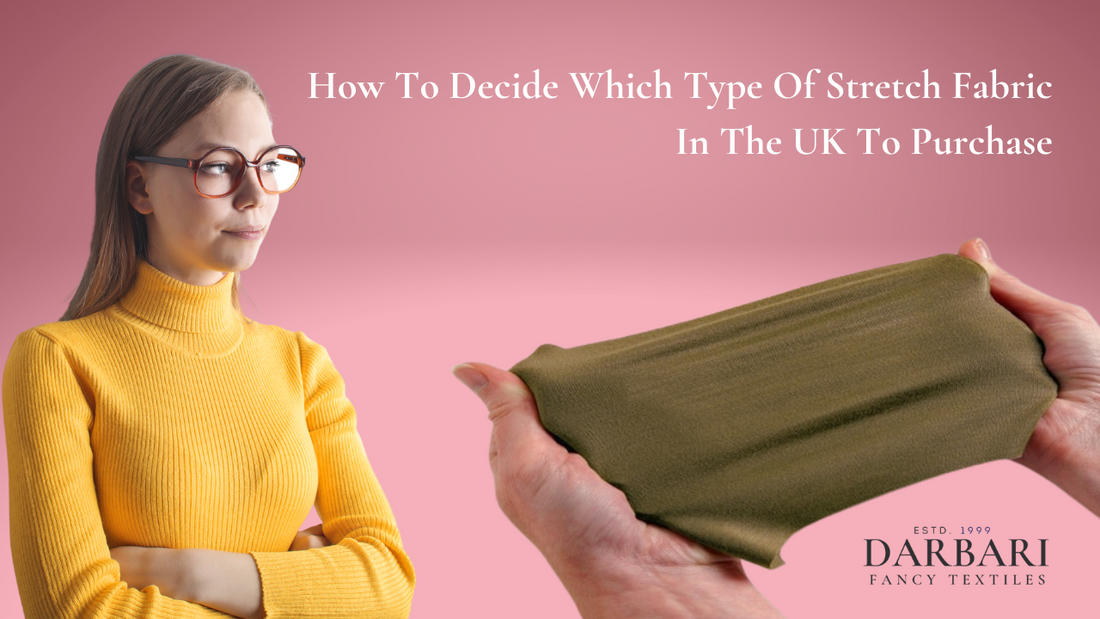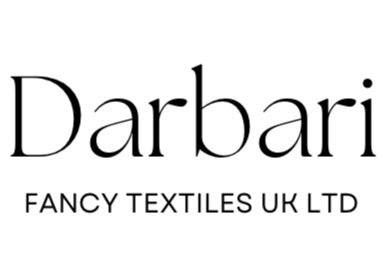
How To Decide Which Type Of Stretch Fabric In The UK To Purchase | Stretch Fabric Guide
Stretch fabric in the UK is a unique and versatile choice for use in home décor and fashion. The sheer variety of styles and types available, however, makes it difficult to decide which stretch fabric to purchase. Luckily, there are a number of guidelines and hints to help you make the right choice for your specific project.
Here are some tips on how to choose between them:
1. Fabric Content
Stretch fabric in the UK can be a number of different fabrics, including rayon, polyester, nylon, spandex/lycra and cotton blends. The content should have some impact on how it will be used or displayed.
It is important to know whether you are looking for stretch fabric in the UK for fashion or home décor before deciding which type of stretch fabric to purchase. For example, if you are looking to sew an article of clothing with stretch fabric in the UK, opt for a high-stretch variant that contains spandex, rather than one consisting solely of polyester. If it will be used in upholstery projects at home, however, polyester may suit best because it is more durable and less prone to ripping or tearing.
Cotton stretch fabrics do not work well under high heat, while synthetic materials may melt. On the other hand, synthetic fabrics are frequently easier to clean and more durable than natural-fiber stretch fabrics. Stretch fabric made from spandex/lycra provides good elasticity for active wear like yoga pants and leggings; this same durability makes it less appropriate for dresses and skirts where it may overstretch and become loose with time.
2. Weight of Fabric
The weight of the stretch fabric in the UK is an important determinant of how well it hangs on a wall or drapes from a window. Lightweight fabrics are less likely to weigh down clothing and curtains, but they also have less stretch so they can't be bunched together as easily for a more sculpted look. Heavyweight stretch fabrics create a smoother look on walls and windows because it holds its shape better, but heavier fabrics may not be comfortable for wearing since it causes garments to stick to the skin.
3. Fashion Style
Stretch fabric in the UK can be found in a number of styles, depending on what it will be used for. Fashion is an area where stretch fabric really thrives; almost every style, from miniskirts to formal attire, works well with stretch fabrics. Stretch fabrics are also ideal for athletic wear like yoga pants because they offer enough flexibility without sacrificing comfort.
On the other hand, some stretch fabrics may not work well in certain fashions or applications. Materials that are too heavy or stiff do not work well for fashion items like leggings because they cannot accommodate movement and therefore cannot be worn comfortably during exercise. False eyelashes made with heavy synthetic materials may pull at the lashes when attached to natural eyelashes since they don't have enough flexibility.
4. Texture and Colour
Stretch fabrics in the UK need not be a solid colour, even if they are stretch fabric for fashion purposes. Some can have a textured look or pattern that adds interest to walls, upholstered furniture and clothing alike. It is worth mentioning that some of these textures may require special care--for example, metallic fabrics should only be dry-cleaned because exposure to water could damage the material's appearance or cause it to rust over time. Stretch fabrics that have been treated with vinyl or other chemicals also need to be dry-cleaned rather than washed by hand.
It is important to consider texture and colour when choosing between different types of stretch fabric in the UK since both can affect how it is used and how it appears. Rayon stretch fabrics tend to be less durable than most synthetic materials, but the former can also give garments a flowing effect that may work well with certain styles of clothing or lingerie. Polyester stretch fabrics are more common in home décor because its smooth surface works well for creating pleats and folds in curtains and other decorations.
5. Durability
Stretch fabric in the UK must stretch enough to accommodate movement and wear comfortably, but it should also be durable enough to last through frequent use without becoming frayed or damaged. It helps to compare different types of stretch fabric by using information such as how much weight they can bear before tearing or ripping, whether they after washing and how fast they fade.
Some stretch fabrics retain their elasticity better than others when they're used for repeated tasks. Meticulous care should be taken with fabrics that are delicate, such as those made from rayon or spandex/lycra. Vinyl and synthetic leather are also less
flexible compared to cotton or polyester, but these materials tend to withstand wear better over time. Cotton stretch fabrics have the most give of all types of stretch fabric in the UK so they may require frequent replacement since it can lose its resilience rather quickly during regular use.
6. Stretch Level
The degree of stretch that a particular piece of stretch fabric in the UK provides is its 'stretch level.' The higher the level, the more flexible and form-fitting it will be; conversely, lower levels are less elastic and better suited to smooth out wrinkles or provide cushioning.
7. Appearance
Since some stretch fabrics in the UK come in many different styles while others are limited to basic neutrals, appearance may also determine which type of stretch fabric to purchase. If you want your clothes or décor items to stand out, this factor is especially important; the other hand, if you are looking for something more subtle, it may be better to choose one of the stretch fabrics in the UK that are more neutral in appearance.
8. Price
Purchasing any type of fabric can present a challenge because prices fluctuate often depending on availability and provider. Stretch fabrics range widely in price, with higher priced options being less elastic and better suited to wall décor or clothing that is draped instead of bunched together tightly. The budget should have some impact on
which type stretch fabric in the UK you decide to purchase since lower price levels also mean reduced flexibility and durability.
9. End Use
The intended end use of your stretch fabric will help determine what type is most appropriate for purchase. Stretch curtain fabrics are often available as light to medium weight fabrics, while stretch fabric in the UK for yoga pants is often heavier and more durable. Stretch African mud cloth can be very lightweight or heavyweight depending on how much it needs to stretch.
Article summary [A quick blurb]
Stretch fabric in the UK are available in a variety of styles, weights, fashion trends, levels of elasticity and colors.
This article provides tips on choosing between them based on their content, weight, fashion style, stretch level, appearance and price so that you can decide which type of stretch fabric in the UK will work best for your specific application.
Remember you can always visit our fabric Store in UK or check out our website - www.darbari.co.uk for more info on any of our fabrics!
Have a great day friends!
